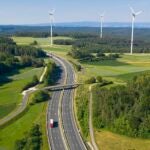- Resources
- Analysis & Resources
Resources
Analysis & Resources
Published: November 16, 2019 by EDF Staff
Already, cities and countries with hundreds of millions of residents are calling for integrated climate and clean air action. Freight is the fastest growing source of greenhouse gases and a major source of local air pollution:
- Medium and heavy duty vehicles account for nearly 60% of these new emissions and are projected to rival light-duty vehicles as the largest source of transportation GHGs by 2050.
- Medium and heavy duty vehicles are projected to account for 40% of the increase in global oil demand through 2050, which, in addition to the direct GHG emissions, carries with it the climate impacts of upstream methane emissions and localized health and community impacts associated with the production, transport and delivery of oil to its end-uses.
Consumers increasingly care about climate change and corporate sustainability, and how a product travels is part of that lifecycle. More than two-thirds of consumers surveyed consider sustainability when making a purchase and are willing to pay more for sustainable products.
Goods transportation is also a concern of communities. Even with the promise of jobs, communities are pushing back against business that rely on and attract medium and heavy duty vehicles:
- Bloomington, San Bernardino County, CA – A resident files a lawsuit against the quickening pace of warehouse development in an e-commerce town.
- Robinsville, NJ – Mayor vowes to sue Amazon for traffic and congestion caused by its warehouse.
EDF and partners are developing a set of resources to help your company understand your impact and the opportunities for leadership on goods transportation. Stay tuned for help with:
- Resources to overcome key barriers (e.g., charging, financing, vehicle suitability and performance)
- Decision-support tool for integrated climate and clean air action
- Examples of business leadership

